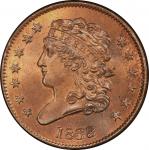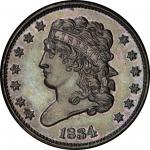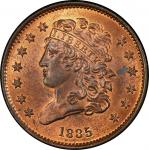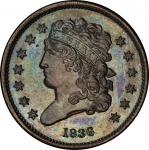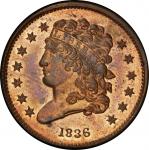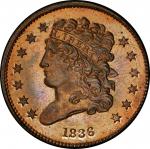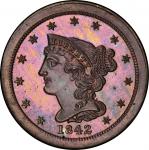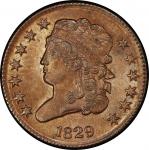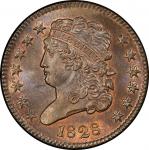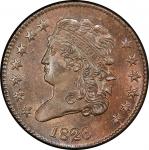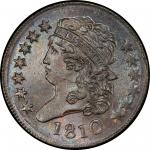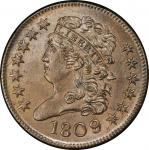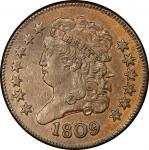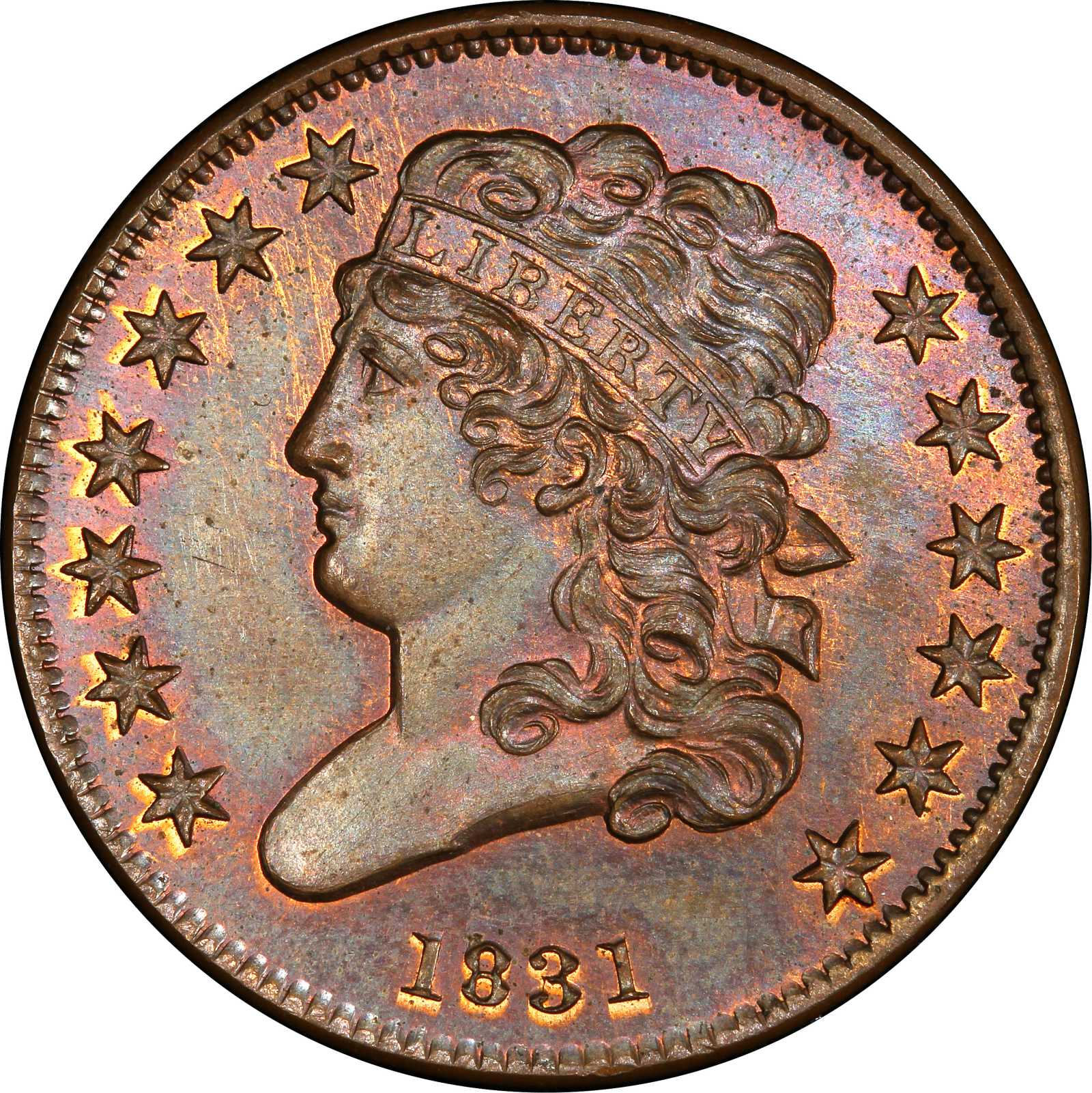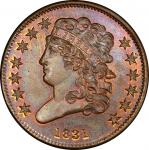In viewing the availability of the 1831 Proof-only half cents, I have found that, as a single year, they are the least available of all. - Ernest J. Montgomery, M.D., "Proof-Only Half Cents, Part II," Penny-Wise, March 1978Halos of mint color surround design elements on both sides, offering fine contrast to deep violet and medium brown devices and fields. Some striations of mint color marble their way through the upper left obverse field, the central reverse, and other regions where they are less evident. Neither side is particularly reflective, but both sides are extremely well struck. A high rim surrounds the right side of the obverse, while the rim is more consistent on the better centered reverse. Some microscopic specks are seen in the obverse fields, none substantial enough to call out individually. A single tiny abrasion on the raised rim is seen below the space between 31 of the date.There is likely no such thing as an 1831 circulation strike half cent, though a somewhat worn piece in the Missouri Cabinet was assigned a grade of AU-55 by PCGS. Instead, there are three varieties of Proofs that collectors can choose among to own an example of this date. Original 1831 half cents, struck in Proof finish in 1831, are extreme rarities, with perhaps a dozen known. The 1831 half cents with the reverse type of 1840 were coined much later, perhaps as late as the 1870s, and are also extremely rare. Just five are known, including the specimen in the next lot. Most date collectors end up acquiring an example like this, if they ever find one at all. The 1831 First Restrikes use a reverse from 1836 and were likely coined in the late 1850s, when interest in United States copper coins first began to blossom.There may be as many as three dozen 1836 First Restrikes known, most somewhat handled. Rick Coleman identified 32 provenance chains in the pages of Penny-Wise, but the listing for this coin was actually for two different specimens that looked remarkably similar. Others appear not to have made the list at all, including the example offered as lot 2112 in the June 2004 Medio sale by Stacks and American Numismatic Rarities.This appears to have the oldest provenance of any 1831 First Restrike currently traced. Coincidentally, it is also one of the first struck, coined from a perfect state of the dies with neither swelling nor the crack that bisects the reverse in later states. Colemans research found 20 early die state pieces. The only other specimens that Coleman was able to trace to before World War I are the New York Public Library coin (donated by Thomas Addis Emmet in the late 1880s), the Gschwend coin that was sold as part of Auction 80, and the Eliasberg coin that John H. Clapp had acquired at the 1904 Mills sale. This coin, purchased by T. Harrison Garrett before his demise in 1888, was among those deaccessioned by Johns Hopkins University in 1976 to be sold by Stacks. It appears to have sold publicly just twice since.




